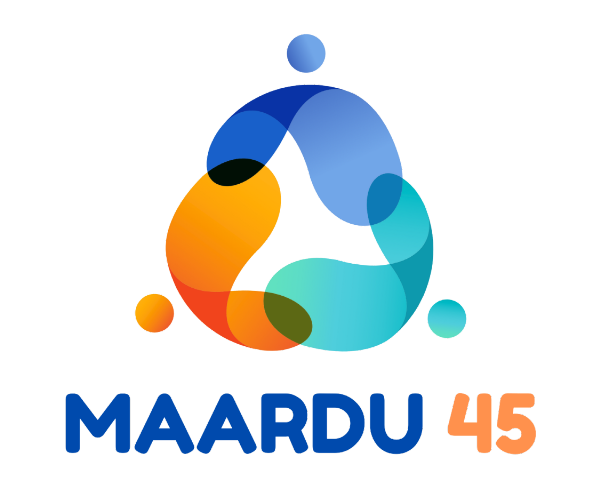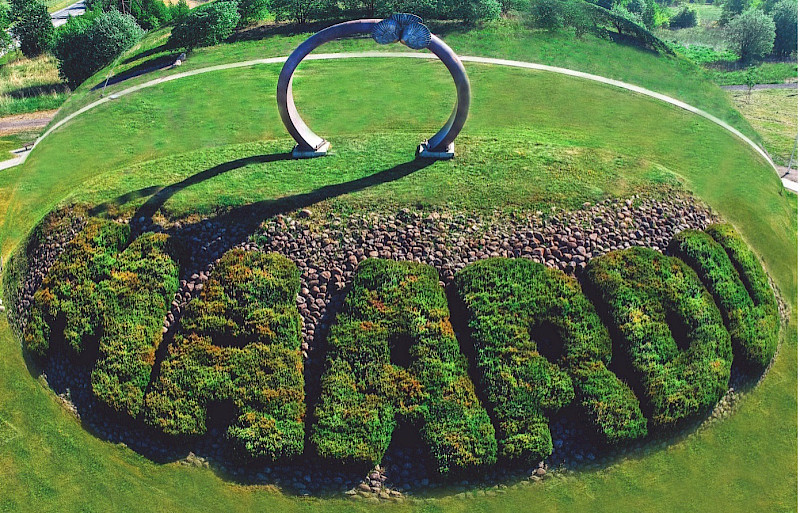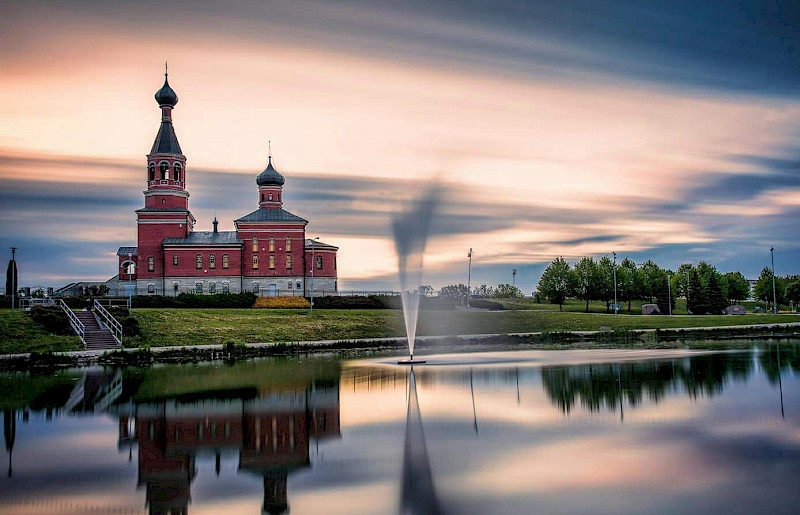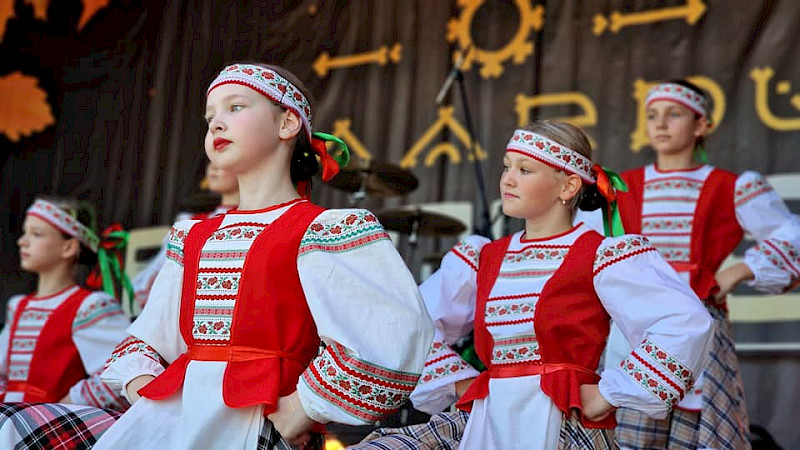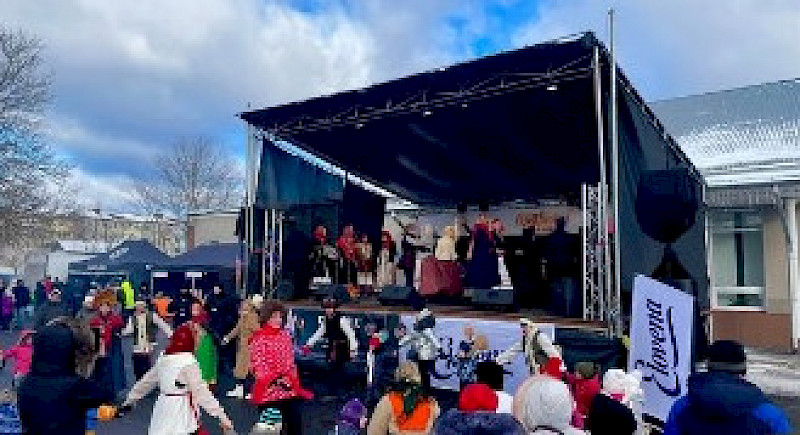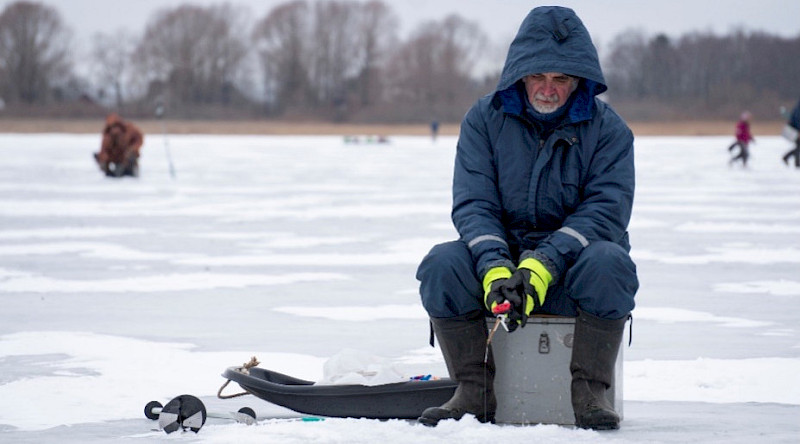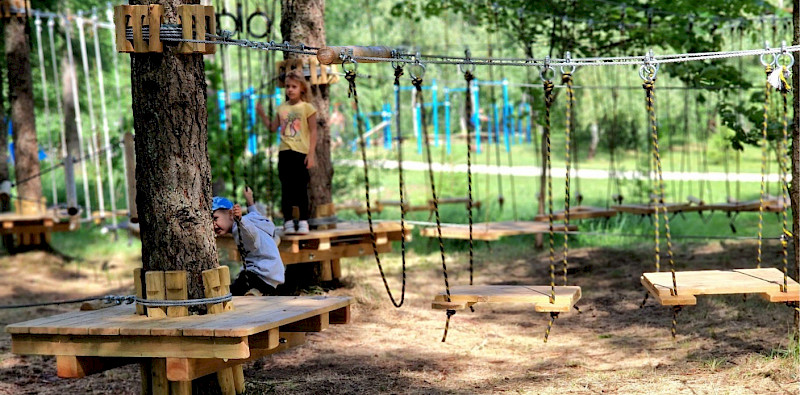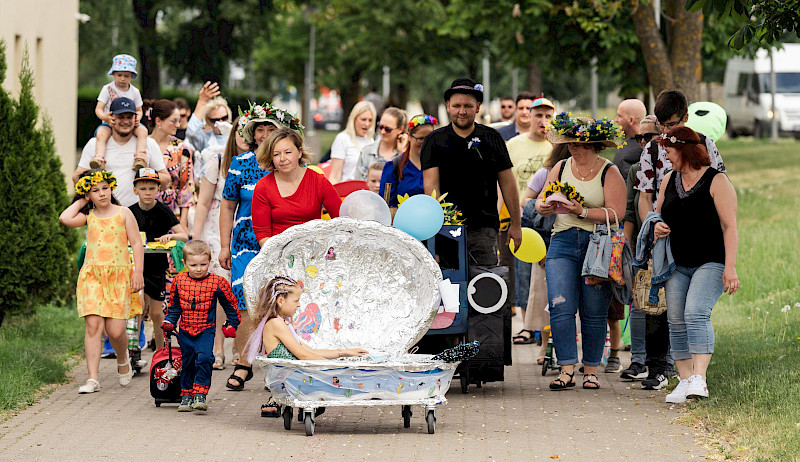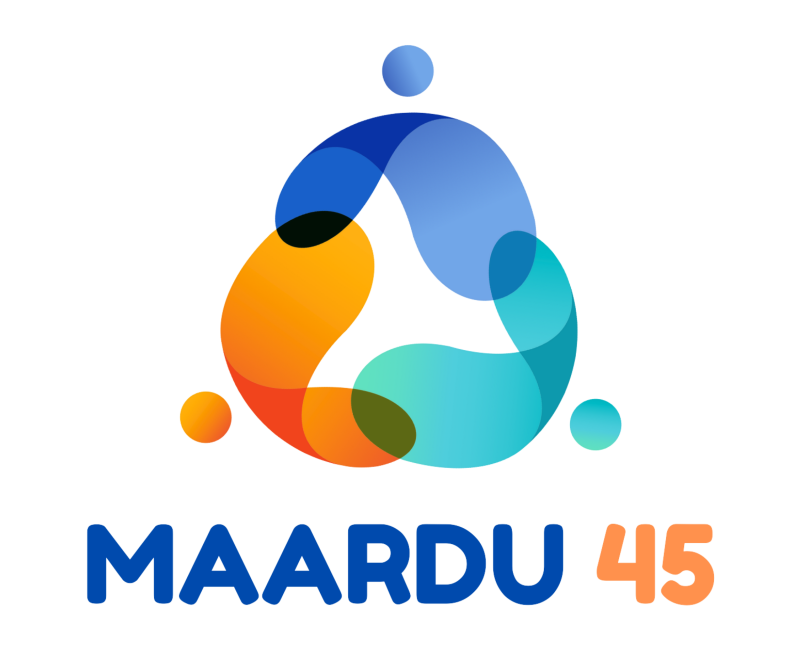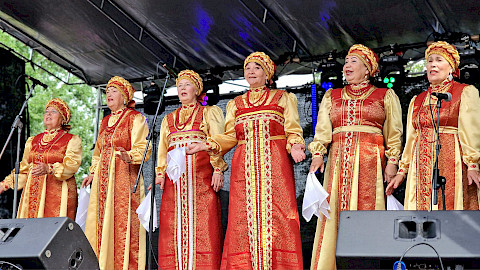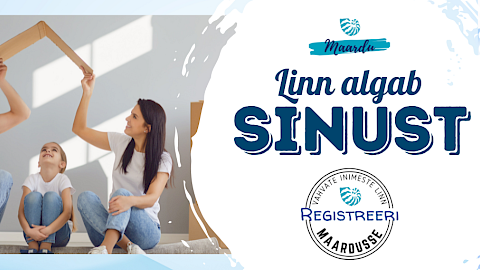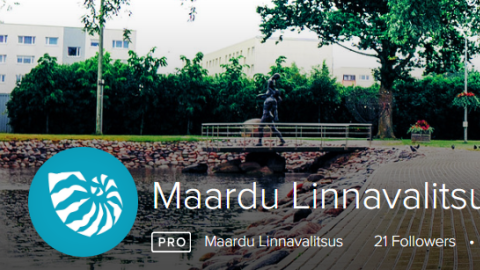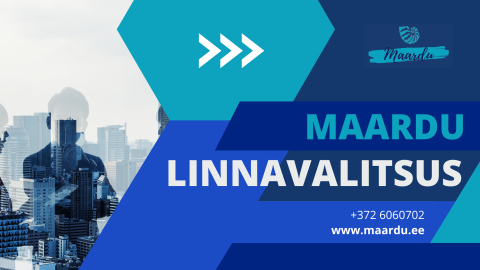Interesting facts about Maardu
Did you know that Maardu holds many fascinating secrets?
Maardu is more than just a city—it’s a place where history meets modern living, where nature and community create a unique atmosphere, and where surprises await at every turn. We have gathered some captivating facts that highlight Maardu’s diverse character and rich cultural heritage. Take a look and discover what makes Maardu such a special city!
The Legend of Maardu’s Origins
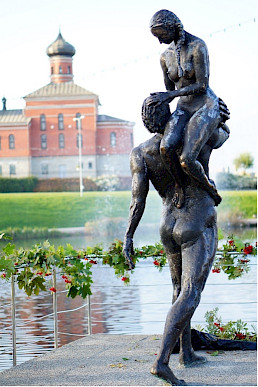 Near the village of Kallavere, Maardu Manor was built, falling under the rule of the cruel and depraved Baron Hindenburg von Rilke. One day, a young couple, Mattis and Anni, came to the baron seeking a blessing for their marriage. However, von Rilke imprisoned Mattis and sought to take advantage of Anni’s vulnerability. A kind old servant secretly freed the young lovers, urging them to flee. But the baron, who transformed into a wolf at night, summoned his ruthless warriors—creatures who chased the fleeing couple in animal form. Just as the pack was about to catch them, Anni prayed for a miracle. The heavens opened, lightning scattered the beasts, and a torrential rain drowned them.
Near the village of Kallavere, Maardu Manor was built, falling under the rule of the cruel and depraved Baron Hindenburg von Rilke. One day, a young couple, Mattis and Anni, came to the baron seeking a blessing for their marriage. However, von Rilke imprisoned Mattis and sought to take advantage of Anni’s vulnerability. A kind old servant secretly freed the young lovers, urging them to flee. But the baron, who transformed into a wolf at night, summoned his ruthless warriors—creatures who chased the fleeing couple in animal form. Just as the pack was about to catch them, Anni prayed for a miracle. The heavens opened, lightning scattered the beasts, and a torrential rain drowned them.
Exhausted but safe, Anni and Mattis reached Kallavere village, which lay abandoned due to the plague. There, they encountered an old man—rumored to be the plague itself—who, instead of harming them, spared their lives, declaring that their lineage would give birth to Maardu. And so it happened: the village flourished and grew into the beautiful, welcoming city we know today.
In 2015, this legend was immortalized in bronze with the sculpture “The Lovers of Maardu” by famous Estonian sculptor Tauno Kangro, placed by the pond in Kellamäe Park.
Symbol of Maardu
As you enter Maardu from Peterburi Road, your attention is immediately drawn to a large ring-shaped sculpture, encircled by neatly trimmed bushes spelling out the city's name—"Maardu". This artwork, created by Tauno Kangro, was unveiled in celebration of Maardu’s 35th anniversary. While the sculpture officially symbolizes a seashell, which is the emblem of Maardu, locals affectionately refer to it as "the ring", as it appears that way from a distance.
But why was the seashell chosen as Maardu’s symbol? The answer lies deep in history. Centuries ago, tiny seashells, cemented together with quartz sand, formed sedimentary rocks, creating ideal conditions for phosphorite deposits to develop. These very shells laid the foundation for industrial production in Maardu, which, during its peak, provided jobs for nearly 2,500 people. Thus, the seashell carries a profound meaning—it represents the city’s industrial past and serves as a reminder of Maardu’s strong and unified community throughout history.
St. Michael the Archangel Church
In 1998, atop a scenic hill in Kellamäe Park, the Church of St. Michael the Archangel was completed, becoming a cherished spiritual and cultural landmark in the heart of Maardu. Surrounded by a picturesque park with a serene pond, this two-story red-brick church, designed by architect Vlasov, stands as a testament to faith, devotion, and community spirit. The church's construction was made possible thanks to the dedication of its supporters and generous donations from all over the world.
Even before the church was fully completed, in 1994, the lower chapel was consecrated in honor of St. Seraphim of Sarov by Metropolitan Cornelius of Tallinn and All Estonia. Since then, regular church services have been held, allowing the Maardu community to gather and pray in their own city.
Maardu Fair
Twice a year, in spring and autumn, Maardu hosts a grand fair, attracting hundreds of merchants from across Estonia and beyond. This lively event offers visitors a chance to browse and purchase a wide variety of goods, including honey, nuts, meat, fish, handicrafts, household items, spices, fur products, and handmade sweets.
One of the fair’s highlights is its vibrant entertainment program, which lasts almost the entire trading day. Children can enjoy various attractions, while adults can relax in street cafés, savoring delicious dishes from different national cuisines. The festive day concludes with a spectacular fireworks display, making the Maardu Automn Fair a truly unforgettable experience for all!
Maslenitsa
Every spring, Maardu comes alive with Maslenitsa, a beloved festival that gathers hundreds of residents for a joyful farewell to winter and a warm welcome to the long-awaited spring. The celebration is filled with delicious pancakes, vibrant performances, folk games, and exciting competitions. This traditional folk festival holds a special place in the hearts of Maardu’s people, bringing the community together for an unforgettable day outdoors. The event offers a full-day program of cultural performances, a lively fair, traditional food tasting, dancing, and interactive contests.
Following ancient customs, the highlight of the festival is the burning of the Maslenitsa effigy, a spectacular and symbolic farewell to winter, making way for warmth, joy, and renewal.
Maardu perch
Every year, ice fishing enthusiasts gather at Lake Maardu to take part in the traditional Maardu Perch competition. Prizes are awarded in various categories: the largest and smallest fish caught, the youngest and oldest angler. Additionally, the most successful fisherman from Maardu is specially rewarded.
This is a competition where the main goal is to share the joy of one’s favorite hobby – fishing. It is an event that brings together both experienced anglers and beginners, creating a friendly and welcoming atmosphere for everyone.
Participatory Budgeting in Maardu
Since 2016, the city of Maardu has actively involved its residents in shaping the municipal budget. The participatory budgeting initiative, known as "Make Your Home Town Beautiful", allows all registered Maardu residents aged 16 and older to submit their ideas for improving and beautifying the city. Both the idea submission process and public voting take place on the VOLIS platform.
In 2025, the participatory budget amounts to €50,000.
Through this initiative, new sports and recreational facilities have been created, including a basketball court, skatepark, pier, and outdoor swimming area, enriching community life. Additionally, public spaces such as a dance floor and summer stage in Kallavere provide venues for cultural events and gatherings, making urban life more dynamic and diverse.
Baby Stroller Parade
As part of the International Children's Day celebrations, Maardu hosts a unique and vibrant parade, where the city's main streets come alive with beautifully decorated baby strollers, scooters, prams, and bicycles.
This joyful event brings together dozens of happy children and their parents, creating a cheerful and unforgettable atmosphere. The parade is accompanied by lively music, fun activities, and warm emotions, making it a truly special day for all participants.
Maardu 45th Anniversary Logo
The Maardu 45th anniversary logo symbolically reflects the essence and values of the city. It represents unity and continuity, reminding us that Maardu’s strength lies in diversity and collaboration within our community.
At the heart of the logo, figures holding hands symbolize solidarity and togetherness. They represent the people of Maardu, their unique backgrounds, and the vibrant communities that together create a strong and successful city.
The colors of the logo hold special meaning:
Orange represents Maardu’s past – the foundation of history and traditions that have shaped today’s city.
Dark blue symbolizes the present, the people who contribute daily to the development and growth of Maardu.
Greenish tones reflect the future, filled with dreams, visions, and hopes that guide the city’s continued progress.
Let’s celebrate Maardu’s achievements together and look forward to a future we will build as one!
